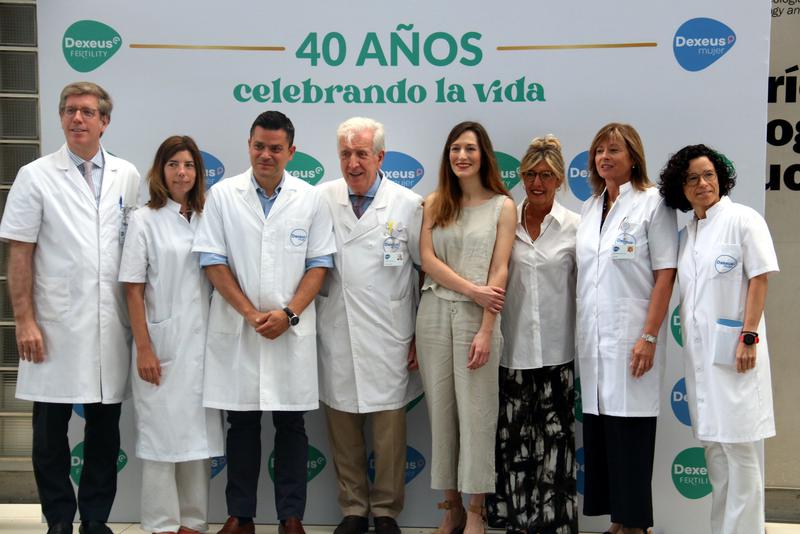How assisted reproduction has changed, 40 years after Spain’s first IVF baby
From “simple procedure” to higher success rates and genetic testing for diseases

In 1984, Spain’s first IVF-conceived baby was born: Victòria Anna Perea Sánchez celebrates her 40th birthday on July 12 this year.
Anna Veiga, the doctor that led that pioneering procedure four decades ago, tells Catalan News that embryologists nowadays have a “fantastic” landscape to work in, given the developments the field has seen in recent years, and the “much better tools” on offer to them.
The team’s objective was to replicate what was done in the UK in 1978, with the birth of Louise Brown, the world’s first baby conceived by IVF: to combine oocytes and sperm to create an embryo, and then put that back into the uterus of the patient.
“Obviously there were difficulties because the process was completely new and we did not know some details that now we know a lot more about, but this is also why it was so challenging and exciting for us,” she adds. As the techniques were not well established, the Catalan doctor explains that it was very difficult to find training on the subject. “We were lucky to be able to go to Vienna in Austria, and also in France in Montpellier, and this is how we started.”
Altogether, “quite a simple procedure” compared with what is possible today. “It was classical IVF, where you take the oocytes and you take the sperm, you put them together and that's it: there was no freezing at that time, there was no microinjection of the sperm into the oocyte, there were no biopsies or genetic analysis,” Anna Veiga explains.
The field has changed “a lot,” Veiga repeats, moving “very rapidly” to achieving higher success rates and “to adapt to the different situations that a couple can have,” such as “treating male factors” and “biopsies in embryos to assess the genetic constitution.”
The technology has developed in new, unexpected directions, and is now being used to help patients’ general health. “The combination of assisted reproduction and genetics and genomics is really a fantastic combination because it will allow us to provide solutions to many different problems,” according to Veiga, “not only the treatment of infertility but also in trying to understand pathologies and how to solve them.”
.
The doctor also believes that “the characteristics of the patients have changed a lot” since the country’s first IVF birth. Whereas before it was mostly to help in cases of infertility, nowadays there are many cases of “women that have no more oocytes available to get pregnant because they are too old.” “The age women have their first children has been increasing and increasing for different sociological reasons,” Dr. Veiga.
Dr. Federica Moffa, the Medical Director at the clinic Fertilab in Barcelona, says that a lot has changed in the lab and in genetics: “those are the two big fields that allowed us to increase pregnancy rate and delivery rates with healthy babies.”
Dr. Moffa has been working in IVF for 30 years, and explains that “incubator with video control systems,” has allowed for better control and safety.
Additionally, “one of the big advances is the long culture of the embryos up to what we call blastocyst stage, five- or six-day stage embryos,” Dr Moffa explains. “This allowed us to select the best and to do single embryo transfer.”
In the past, it was more common to transfer two or three embryos at a time, and this was “very dangerous because triplets and twin pregnancies are dangerous pregnancies, especially in older patients. So today, a good practice would avoid double or triple embryo transfers.”
Biologists now have the possibility to test “not only the embryos to detect if they have some abnormalities that will end up in miscarriage or malformation, but also the genetics compatibility between partners and also with donors.”
“We are all healthy carriers of some rare mutation, this is not a problem itself. But it's a problem if we meet someone that has the same mutation, so those tests that are called ‘carrier tests’ are now routinely performed for donors to minimize the risk of genetic disease in the offspring.”
Such tests can screen for diseases such as cystic fibrosis, thalassemia, dystrophy, and more.